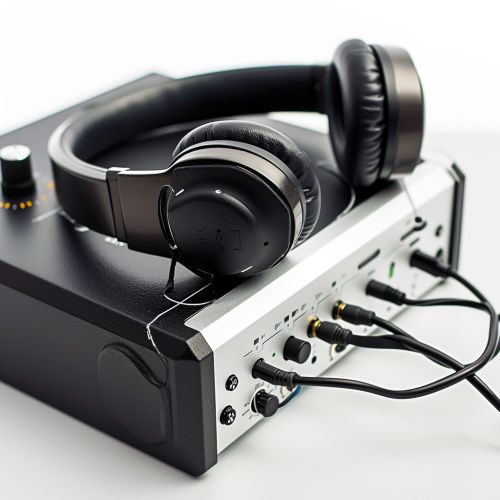Audiometry
Introduction
Audiometry is the science and practice of measuring hearing acuity for variations in sound intensity and pitch and for tonal purity, involving thresholds and differing frequencies. It is an integral part of audiological assessments and is performed by an audiologist using an audiometer.
History
The history of audiometry dates back to the early 20th century, when the first rudimentary audiometers were developed. These early devices were largely mechanical and used tuning forks to produce different frequencies of sound. Over time, the technology evolved, and electronic audiometers became the standard in the field. The development of audiometry has been closely tied to advancements in electronics and acoustics.
Types of Audiometry
There are several types of audiometry tests, each designed to measure different aspects of hearing. These include pure-tone audiometry, speech audiometry, and impedance audiometry.
Pure-tone Audiometry


Pure-tone audiometry is the most common type of audiometry test. It involves the use of an audiometer to play a series of tones at different frequencies and volumes into the patient's ears. The patient indicates when they can hear the tone, allowing the audiologist to map out their hearing sensitivity at different frequencies.
Speech Audiometry
Speech audiometry is a test that measures the patient's ability to hear and understand speech. The test involves the audiologist playing a series of words or sentences at different volumes and asking the patient to repeat them. This test can help identify issues with speech recognition, which may not be apparent in a pure-tone audiometry test.
Impedance Audiometry
Impedance audiometry, also known as tympanometry, is a test that measures the movement of the eardrum in response to changes in air pressure. This can help identify issues with the middle ear, such as a blockage or fluid build-up.
Procedure
The procedure for an audiometry test will vary depending on the type of test being performed. However, most tests involve the patient wearing headphones and responding to a series of sounds produced by an audiometer. The audiologist will typically start with a pure-tone audiometry test, before moving on to more specialized tests if necessary.
Interpretation of Results
The results of an audiometry test are typically plotted on an audiogram, a graph that shows the patient's hearing sensitivity at different frequencies. The audiogram can help the audiologist identify the type and degree of hearing loss, if any.
Applications
Audiometry has a wide range of applications, from diagnosing hearing loss to fitting hearing aids. It is also used in occupational health to monitor workers' hearing in environments with high levels of noise.
Limitations
While audiometry is a powerful tool for assessing hearing, it does have its limitations. For example, it cannot measure the functional impact of hearing loss on a person's daily life, and it may not always accurately reflect a person's experience of their hearing.
Future Developments
The field of audiometry continues to evolve, with new technologies and techniques being developed to improve the accuracy and ease of hearing assessments. These include the use of digital audiometers and the development of more sophisticated tests for assessing speech recognition.
